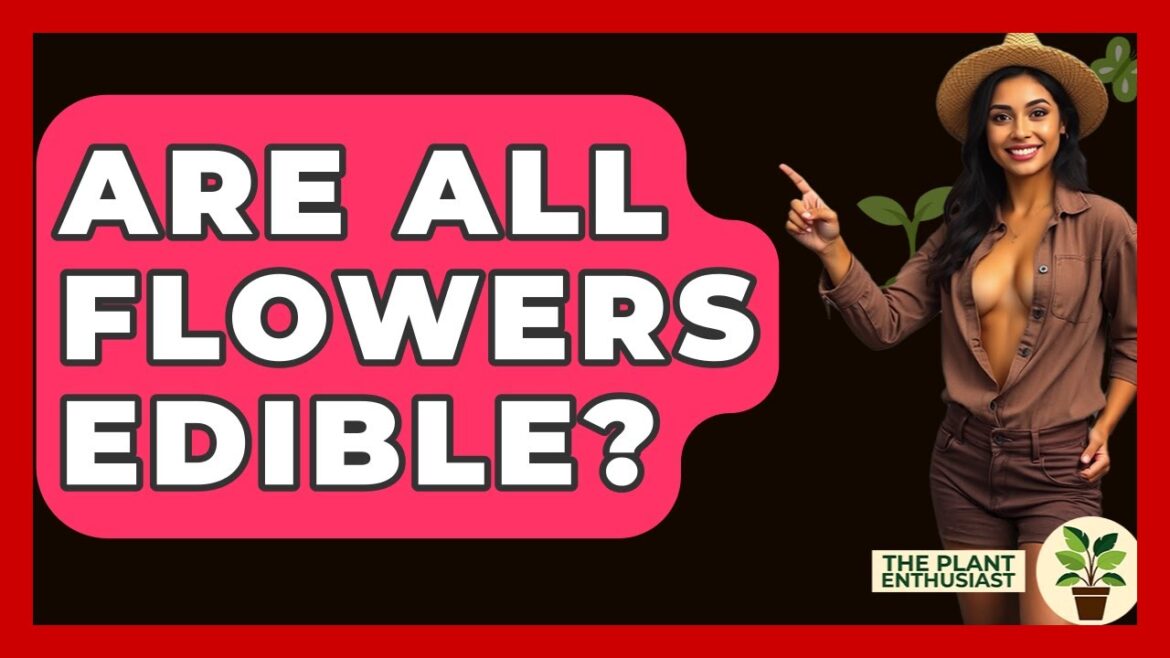Are All Flowers Edible? In this informative video, we will dive into the world of edible flowers and their role in our culinary experiences. We’ll discuss which flowers are safe to eat and how they can enhance your dishes with unique flavors and vibrant colors. You’ll learn about popular edible flowers that can be easily incorporated into salads, beverages, and garnishes.
However, not all flowers are safe for consumption. We’ll highlight some of the toxic varieties that you should avoid, as they can pose serious health risks. Understanding the difference between edible and poisonous flowers is essential for anyone interested in gardening or cooking with flowers.
Additionally, we’ll provide tips on growing edible flowers in your garden and the best practices to ensure they remain free from harmful chemicals. Proper harvesting techniques will also be shared, allowing you to enjoy the best flavors while minimizing any potential irritants.
Join us for this engaging discussion about the beauty and benefits of edible flowers. Make sure to subscribe to our channel for more helpful tips and information on plants and gardening!
⬇️ Subscribe to our channel for more valuable insights.
🔗Subscribe: https://www.youtube.com/@The-Plant-Enthusiast/?sub_confirmation=1
#EdibleFlowers #GardeningTips #FlowerPower #HealthyEating #CulinaryHerbs #GardenToTable #HomeGardening #PlantBased #NaturalIngredients #Foodie #HerbalCooking #SustainableLiving #OrganicGardening #FlowerGardening #CookingWithFlowers
About Us: Welcome to The Plant Enthusiast, your go-to destination for everything related to the wonderful world of plants! Whether you’re a seasoned gardener or just starting your green journey, our channel is dedicated to nurturing your passion for plant care, cultivation, and creativity.
Are all flowers edible? Have you ever wondered if all flowers are safe to eat? It might surprise you to learn that not every flower is edible. While many flowers are delightful additions to our plates, some can be quite harmful. Edible flowers come from specific plant species that are recognized as safe for human consumption. However, there are plenty of flowers that contain toxins or irritants that can lead to serious health issues. Let’s break this down. Edible flowers are those that can be consumed without causing harm. They can add unique flavors, vibrant colors, and interesting textures to your dishes. Think of netoriums, dandelions, dillies, hibiscus, lavender, and colundula. These flowers are commonly used in salads as garnishes or even infused in drinks. On the other hand, toxic flowers can cause a range of symptoms if ingested. For example, oleander, daffodils, and fox glove are known to be poisonous. Eating these flowers can lead to mild digestive upset or even severe poisoning. Some plants like gyson weed and opium poppy contain toxic alkoids that should be avoided entirely. When it comes to gardening, incorporating edible flowers into your garden can be a fun and rewarding experience. However, it is essential to correctly identify the species you are growing. This ensures that you are only consuming flowers that are safe. Growing edible flowers alongside vegetables and herbs can create a beautiful and functional garden space. If you decide to grow edible flowers, avoid using pesticides or chemicals on them. This is important because you want to ensure that what you are consuming is free from harmful substances. Proper harvesting is also key. For instance, removing the stammans or pistols from certain flowers can improve their taste and reduce any potential irritants. Remember, not all flowers are meant to be food. Some have evolved to produce toxins as a defense mechanism. Edible flowers provide a special connection between humans and plants, offering nourishment and flavor. Always be cautious and make sure to confirm that the flowers you are considering for your meals are indeed safe to eat. This knowledge will help you enjoy the beauty and taste of edible flowers while keeping your health in check.


Comments are closed.